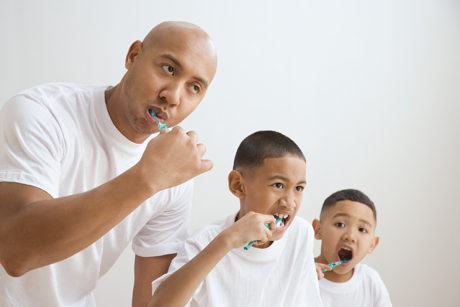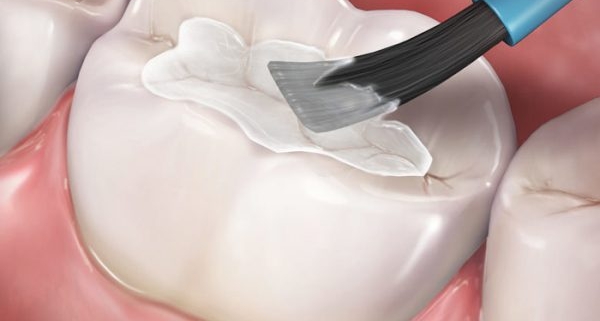4 oral healthcare points for your pregnant patients
1. Oral health can affect pregnancy outcome
A pregnant women’s oral health can affect the outcome of her pregnancy. Studies have found associations between periodontal infections and preterm birth, or babies being born early. However, research has not shown that pregnancy outcomes improve with dental treatment.
“A mother who has poor oral health has a greater chance of transmitting cavity-causing bacteria to her newborn, even when the newborn doesn’t have teeth.”— Melanie Mayberry, DDS
“Poor oral health can negatively impact birth outcomes,” Dr. Mayberry told DrBicuspid.com.
Avoiding chronic inflammation and maintaining good nutrition are other important factors during pregnancy, as well as at other times, she said.
Pediatric dentist Anupama Tate, DMD, MPH, emphasized the connection between the mouth and the entire body. She is an associate professor of pediatrics at George Washington University School of Medicine and the director of advocacy and research in the division of oral health at Children’s National Medical Center in Washington, DC.
“Poor oral health for a pregnant woman could be linked to birth complications like pre-eclampsia, preterm birth, and low birth-weight infants,” she said.
2. Dental treatment is safe
Studies have found that obtaining dental care, whether regular cleanings, placement of fillings, teeth extractions, imaging, or other procedures, is safe during pregnancy, and dentists and obstetricians who spoke with DrBicuspid.comrecommended it.
“Dental treatment during pregnancy, including dental radiographs with proper shielding and local anesthetics, is safe during all trimesters,” Dr. Tate said.
She also recommended proper oral hygiene using fluoridated toothpaste, chewing sugar-free gum, and eating small amounts of nutritious food throughout the day to help minimize caries risk.
Oral health for oral health’s sake is important, said Kim Boggess, MD. She is an obstetrician/gynecologist (ob/gyn) and a professor of maternal fetal medicine at the University of North Carolina at Chapel Hill School of Medicine.
Dr. Boggess recommended routine dental care when pregnant women are due for a cleaning or checkup but delaying x-rays until after the first trimester.
“Urgent problems that include pain or fever should be addressed immediately regardless of trimester,” she noted.
Keeping the mouth as healthy as possible and free of caries and disease during pregnancy can reduce the chances of pain, infection, swelling, or chronic inflammation that might cause a woman to use antibiotics or an analgesic for a significant period of time, Dr. Mayberry noted.
3. What is normal?
While some oral health changes are normal during pregnancy, losing a tooth is not, the healthcare practitioners advised.
Some changes commonly occur during pregnancy that affect oral health, explained Renee Samelson, MD, an ob/gyn at the Albany Medical Center in New York. These include periodontal disease, increased food cravings and snacking that can affect caries risk, nausea and vomiting, and increased salivation and gum sensitivity.
Vomiting can bring up acid from the stomach. After vomiting, a pregnant woman should rinse her mouth with water mixed with 1 tsp of baking soda, or just plain water, to get rid of the acid, the dentists and ob/gyns recommended. Brushing teeth should be postponed for an hour after vomiting to minimize dental erosion, Dr. Tate said.
Despite and because of these issues, the dentists and ob/gyns advised that continuing with regular toothbrushing and flossing during pregnancy is important. Using mouthwash containing cetylpyridinium chloride can help eliminate bacteria associated with inflammation that can affect gums, Dr. Samelson added.
4. Untreated problems can be passed on
Untreated oral health problems in a mother can be passed on to her baby, experts noted. They also emphasized that early child caries is a preventable infectious disease.
Pediatric dentist Rocio Quinonez, DMD, MPH, an associate professor at the University of North Carolina at Chapel Hill School of Dentistry, discussed the connection between maternal and pediatric oral health, which is not yet completely understood.
“Mothers with cavities have kids with cavities,” Dr. Quinonez said. “There is a biological connection.”
Adults can transmit caries-causing bacteria to children in their households through common activities, such as tasting hot food before letting their child eat it or putting a pacifier in their mouth to clean it off, Dr. Samelson explained. This can affect children’s primary and permanent teeth.
Xylitol and secondarily sorbitol have been found to block the growth of Streptococcus mutans and prevent glucose metabolization, which can help avoid caries, she said. With the exception of gum containing xylitol or sorbitol, she recommended that patients and their children limit consumption of anything that sticks to teeth, which could include dried fruit or certain prenatal vitamins, and brush teeth or chew xylitol gum afterward.
Overall, maintaining good oral health during pregnancy is key but perhaps not as compelling as other aspects of healthcare during the prenatal period.
for more tips, go to: www.drbicuspid.com




